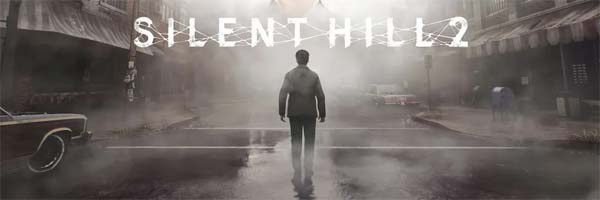
By the time you read this, the remake of Silent Hill 2, being developed by Bloober, is less than 2 months from its expected release. So nothing I write here can possibly change the game. But there has been something that has been nagging at the back of my brain ever since the first trailer for the remake released. Since most of the concern about Bloober's Silent Hill 2 is focused on their historically awful depictions of mental health and trauma, I haven't seen a whole lot of content addressed at this particular concern of mine. So I thought I'd share my thoughts.
First and foremost, I will be discussing the story and ending of the original Silent Hill 2, as well as speculation regarding whether Bloober will change this ending, or somehow botch its execution. As far as I'm concerned, the announcement trailer has already shown that it will be one or the other: a changed ending, or a botched ending. But in any case, if you haven't played Silent Hill 2 before and don't want to be spoiled, then don't read this post. You've been warned.
The announcement trailer for Silent Hill 2: Remake.
Before moving on, feel free to check out the announcement trailer in its entirety, above. You can also watch this complete analysis in video essay format on YouTube.
This entire analysis is also available in video essay format on YouTube.
The original opening
For anyone still here after the spoiler warning, let's talk a little bit about the opening scene of Silent Hill 2, how it relates to the game's ending(s), how this same scene is depicted in the remake trailer, and what the changes to that scene mean for the ending. Silent Hill 2 opens as such:
A mostly calm and collected James Sunderland stares at himself in a dirty bathroom mirror, taking a deep breath, and then walking out to a scenic overlook to explain the premise of the game. He got a letter from his wife, who died of a terminal illness 3 years ago. The letter says that she's alive and waiting for him in Silent Hill. He knows it can't possibly be true, but if there's any chance that she is somehow still alive, he has to know.
This opening shows us a James who is supposedly 3 years removed from the death of his wife. He isn't necessarily grieving any more, but doesn't seem to have completely moved on; otherwise, why be here? Regardless, he is completely surprised by this letter and in disbelief. This is a subtle, subdued opening that gives the player little reason not to take this all at face value. And it goes on to follow this up with a slow-burn opening act to the game, in which James strolls casually through a wooded path along the lake and doesn't encounter anything overtly scary or threatening for a good 20 or 30 minutes, depending on the pace that the player is going.
The original is subdued and gives little reason to not take the premise at face value.
This puts the player in the same headspace as James. We are just as confused, surprised, and curious as him, but with that nagging certainty that all must not be as it seems. This allows the player to role play as James in good faith and sets up the game's eventual twist, and also sets a relatively clean slate for the various ending triggers. The player doesn't see James as anything other than a confused husband, desperately hoping to see his possibly-not-dead wife again. The player is able to play James as such, and how you role play as James will inform how he eventually deals with the game's twist revelation. But the game will be slowly pulling the rug out from under James and the player over the course of the game, gradually establishing him as an un-reliable narrator.
Considering the additional context that this is a sequel to Silent Hill (which was about a father trying to rescue his daughter from a demonic cult), players may have had even less reason to not trust James. They have no clue that this game is going to deviate from the first game's premise and be an introspective and metaphorical tale that is almost completely divorced from the first game's plot. They just know it has the number 2 in the title, so it probably follows from the story of its predecessor. Maybe Mary really is alive? Maybe she's another vessel for the cult's demon god? Or maybe her soul was also split and there's a psychic Mary doppelganger living in Silent Hill who is summoning James to help her stop the cult's plans? Or maybe that doppelganger wants to trick him into helping the cult? And hey, guess what? A few hours into the game, we do indeed meet a Mary doppelganger!
Based on the opening minutes of the game, Silent Hill 2 can go in a lot of potential different directions, either introspective, supernatural, cult-driven, or any combination thereof.
[More]
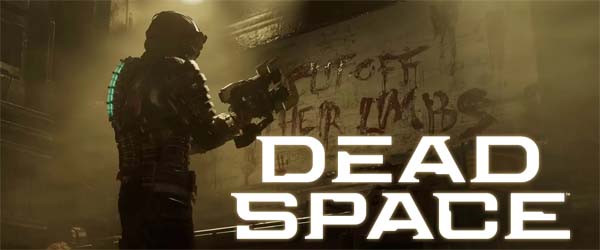
I'm gonna be perfectly honest with you right up front: I'm coming into this review with a negative bias. This is a remake that does not need to exist. Dead Space is only 10 years old, is an HD game that still looks fine. It is designed around gameplay conventions that are still standard practice today, and so the original still holds up well, outside of some mildly-dated presentation. I get the desire to remake or re-imagine older games that actually are dated, like Resident Evil 2 or Final Fantasy VII, which were both completely redesigned with modern gameplay conventions and (in especially in the case of Final Fantasy VII) bold new creative and narrative decisions. I would also understand the desire to go back and take another stab at more recent games which are really good, but which may have been virtually unplayable due to technical problems. Fallout: New Vegas comes to mind.
But this recent fad of rote remasts or remakes of PS3-era games that were already highly-polished and still modern-feeling (and thus hold up well today) just feels like lazy, cynical cash-grabs to me. Games like Dead Space, The Last of Us, and Mass Effect just feel like completely unnecessary remakes -- especially if they're going to be direct recreations of the original with little-to-no creative liberty. Heck, even the Demon's Souls remake feels unnecessary. I would much rather than Sony and FromSoft just release a digital version of the PS3 game on the PS4 and PS5 storefronts and keep the servers going. Maybe even patch the PS3 game with some of the ease-of-use features that were added for the PS5 remake. I'm still on the fence about Silent Hill 2 and Resident Evil 4, since those remakes might take enough creative liberty to justify their existence (assuming they don't shit the bed in doing so). As such, I did not buy this remake of Dead Space retail. I bought a used, second-hand copy in order to save a few bucks and to not give money to EA (and so as not to seem to give implicit support for this trend of unnecessary remakes).
Coming off of Callisto Protocol, Dead Space feels like a masterpiece.
All that being said, having just recently come off of playing through The Callisto Protocol, the difference is night-and-day. This Dead Space remake is, by far, the much better game. It's a good remake of a good game, and it's a good survival horror game in its own right.
Mostly how I remember it
Dead Space is a pretty straight-forward, by-the-numbers recreation of the original game, with only a few creative liberties taken. It's still a 3rd person shooter built around the challenge of shooting off the limbs of zombies and monsters instead of aiming for the center of mass or going for head shots. The story, mission structure, map, and many set pieces will all be completely recognizable to anyone who played the original game, even though some things here and there might be a little different.
As such, pretty much any review of the original Dead Space still holds mostly true here. All the things that I liked about the original game are still present. Unfortunately, I never reviewed the first Dead Space on this blog, so I can't just link you to that. I'll have to just summarize my feelings here.
Isaac is fully voiced and has more agency compared to the original.
The enemies are threatening, and the combat is challenging. The non-traditional weapons, combined with kinesis and stasis and creative enemy design, provide a lot of variety and strategy in combat that goes far beyond just "shoot bad guy in the head". The setting and lighting really help to sell the sci-fi horror aesthetic. The in-universe, diegetic, holographic interface holds up well and never pulls the player out of the immersive environment. The Ishimura itself still feels like a believable, functional place. The story is derivative, cliché, and cringe-worthy in some parts, but I do like the religious undertones and parody of Scientology. [More]
fd3c4399-577e-4a0d-b05d-256753797daf|1|5.0
Tags:Dead Space, Electronic Arts, Motive, Visceral, remake, horror, survival horror, science fiction, shooter, zombie, necromorph, dismemberment, religion, Scientology, Unitology
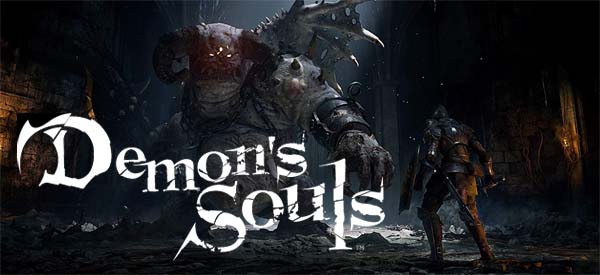
I was finally able to get a Play Station 5 for Christmas. It wasn't easy. I was on a Sony waiting list for months before finally getting the email invite to purchase one. When I booted it up on Christmas Day, I tested it out by playing a few hours of the included Astro's Playroom, while I waited for my first batch of digitally-purchased games to download and install. One of the first of those games was Bluepoint's remake of Demon's Souls.
The original Demon's Souls for PS3 is one of my favorite games ever, so my expectations for the remake were quite high. I was certain that a recreation as faithful as Bluepoint's Shadow of the Colossus remake would be good, but I also felt that Demon's Souls offered a lot more opportunity for improvement compared to the much simpler Shadow of the Colossus.
Technical improvements streamline play
Obviously, the visuals are dramatically improved. There's cloth physics, weather and particle effects, really good lighting, and all the other "next-gen" bells and whistles that one would expect. But the new hardware doesn't only allow visual improvements; it also allows for some technical improvements that do dramatically improve the gameplay experience. Perhaps the best of these technical improvements is the faster load times given by the use of a solid state hard drive.
Dying isn't as much of an inconvenience thanks to faster load times.
Quicker load times make a world of difference. Obviously, it's helpful to only have to wait a few seconds before getting back into the action after dying, rather than having to wait a whole minute to try again. But the quick loading also helps with other activities in game, such as farming. Bluepoint added the ability to warp from an archstone to any other unlocked archstone in the same world, including the one you are standing at. This allows the player to reset the current level, which can be very helpful for farming certain enemies for experience or item drops, and the loading only takes a few seconds. Barely more than sitting at a bonfire in Dark Souls!
The quick load times are also useful for things like reloading the game to refresh crystal lizards, or to trade items with Sparkly the Crow.
The smoother, 60 frames per second framerate also helps make the action feel much smoother, which might hopefully spare players from having to suffer as many deaths from mis-timing dodges and parries or from mashing a button too many times and queuing up the wrong action. The game looks and feels faster and smoother, while still maintaining the slow, weighty, and methodical pace of play of the original.
I'm less impressed by the PvP netcode. I never had problems with lag or other network issues in the original Demon's Souls on the PS3. But I rarely invaded and wasn't very good at PvP, so I might not have survived invasions long enough to realize if the original netcode was laggy or unresponsive.
I've experienced a lot of lag and other network issues during PvP.
In this remake, I'm trying to make more of a point of playing the PvP more. Not only am I engaging in more invasions with the Black Eye Stone, but I'm also reviving to human to play through most levels in the hopes of encountering some invasions from other players. I'm not being invaded a whole lot, so I'm assuming that PvP isn't very active in the remake -- or maybe being on Pacific time means all the invaders are already asleep by the time I'm able to play the game later at night. But when I do have PvP encounters, I notice a lot more lag and questionable parries and backstabs than I remember seeing in the original game.
I guess the improvement in console hardware did not lead to a smoother online play experience?
Consumables can be consumed in bulk.
The single player, however, plays very smoothly, and there are other technical refinements as well. Inventory management is simplified. Multiple consumables (such as hard soul items) can be consumed at once. Excess items can be sent directly to Stockpile Thomas from within any level. The inventory screen will show how many of a given item are in your inventory and also how many are currently stored in the Nexus. And perhaps best of all, both blacksmiths can use upgrade stones and boss souls that are still in storage! No need to grab all my upgrade stones from Stockpile Thomas before warping to Stonefang to upgrade my weapons. Though, the blacksmiths can only upgrade weapons that are in your inventory, so I do have to be sure I take those with me.
This reduces a lot of the tedium of the old inventory system, while still maintaining an absolute carry capacity for the character. I don't have to warp back to the Nexus to offload items if I become over-encumbered (and then reset the whole damn level). But I also am limited in what I can bring with me into a level. I can't carry every weapon, armor, and consumable I own into every gameplay situation, as is the case in Dark Souls. I have to prepare in advance and commit to a specific loadout, making do with what I have or what I can find within the level. This maintains the scrappier, more adventurous feel of the original game.
I am pleased, and a little surprised, that Bluepoint retained the controversial item burden mechanic.
I know that the item burden was a very unpopular feature in the original Demon's Souls, but I actually rather liked how it set such strict limits on what supplies and equipment can be carried into a level. The item burden was the one feature from the original game that I thought was the most likely to get cut in any potential remake, and I'm glad that Bluepoint found a compromise that makes the system less obnoxious, but which preserves the fundamental contribution that item burden brings to Demon's Souls' design. [More]
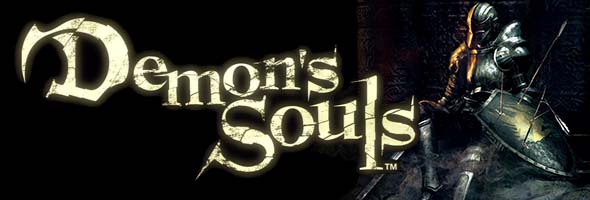
Demon's Souls is coming to the PS5. Rumors of a Demon's Souls remaster have been floating around for years, and I even wrote a blog post back in 2017 about what I'd like to see in any potential remaster or remake. But what we're actually getting goes far beyond a simple remaster. It's more than just Demon's Souls at higher resolution and with a higher framerate. Bluepont Games is re-developing Demon's Souls from the ground up, much like they did with Shadow of the Colossus on PS4.
The scope of the remake means that it's possible that Bluepoint could change mechanics. There's plenty of opportunities to improve Demon's Souls gameplay and add ease-of-use features. But there is one controversial feature that I hope Bluepoint keeps: the item burden.
I posted this defense to YouTube last weekend, but I wanted to transcribe it here as well, for the benefit of my loyal blog readers. But feel free to check out the video as well. It is embedded below:
Demon's Souls' unique design
Players of Dark Souls may be familiar with the equipment burden. If you equip too much heavy armor and weapons, your character will become burdened, which will limit your ability to dodge roll. Demon's Souls had an equip burden that worked pretty much identical, but Demon's Souls had an additional weight burden that accounted for your entire inventory -- not just the items you have equipped. This prevented the player from carrying around excess weapons and armor in your inventory so that you can switch to it at any time during a level.
Dark Souls retained the equip burden but dropped the item burden, possibly as a result of its change to a single, interconnected world. Dark Souls is famous for its brilliant world design, which created a complex vertical helix of interconnected levels. With some exceptions, every part of the map is connected to every other part of the map and the distance between can be traversed by foot. In fact, for the first half of the game, you had to travel the map on foot and take advantage of shortcuts because fast travel is not unlocked until the midpoint of the game.
There was no ludic reason to use Dark Souls' Bottomless Box, and it was removed in the sequels.
The end effect for Dark Souls is that the character does not have convenient access to a central hub location. Firelink Shrine fills a similar role as the Nexus of Demon's Souls, but you cannot warp to for the first half of the game; you have to walk. This means that you can't easily dump excess gear or items at Firelink, which means you have to carry everything with you, which means the Item Burden of Demon's Souls doesn't make much sense. Granted, From included a Bottomless Box item that allows you to stow away excess gear at any bonfire. They could have easily just built the Bottomless Box functionality into the bonfires by default and maintained the Item Burden. But they opted not to, and the lack of an Item Burden mechanic makes the Bottomless Box completely unnecessary. In fact, the sequels to Dark Souls did not include the Bottomless Box at all.
Demon's Souls has a central hub location (the Nexus) that makes it somewhat convenient to drop off or pick up equipment on your way between archstones. [More]
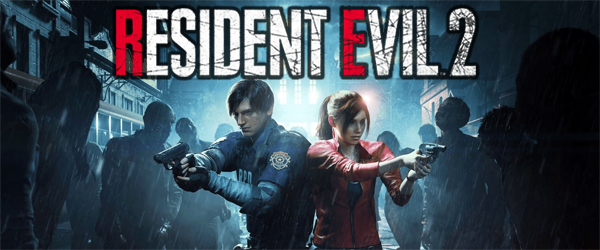
Getting started with this game was rough. First of all, streaming the game initially seemed to be blocked by Capcom, which sent me down an internet rabbit hole of trying to find a work-around. If I couldn't stream or capture gameplay, then it would be awfully hard for me to get decent screenshots -- let alone any video for possible YouTube content. I even Tweeted @AskPlaystation whether I could get a refund, so that I could instead purchase the game on Steam (where I knew I'd be able to record footage). @AskPlaystation never responded.
It was moot anyway, since the next day, I found that the problem was only associated with having High Dynamic Range (HDR) enabled in the PS4's settings. After disabling HDR, I was able to stream the game and capture video footage as normal. Of course, the game's colors didn't look so good -- but whatever, I could live with it. I guess this is a glitch. Maybe Capcom will fix the HDR streaming issue at some point in the future? I can't imagine that they deliberately disabled streaming with HDR, but left it enabled when HDR isn't being used.
You'll need to disable High Dynamic Range (HDR) on the PS4 if you want to stream REmake 2.
But even when I got the streaming and capture functionality working, I lost another night having to troubleshoot my PS4's network connectivity. I kept getting a DNS error. My PS4 has had internet connectivity issues off and on for years, so it might just have a bad network card. Or maybe my ISP is throttling it? It's hard to tell. The console regularly connects to the router and obtains an IP, but then fails to connect to the internet. Or it can connect to the internet, but fails to connect to PSN.
After several hours of troubleshooting, I had to manually enter the DNS addresses of my router's second and third DNS as the PS4's primary and secondary DNS, then sign out of the PSN, then boot up the PS4 in safe mode, then run a database rebuild (which took a few minutes), then reconnect to the PSN. That seems to have worked ... for now. We'll see how long the fix lasts...
In any case, these streaming and network issues cost me the first full weekend with the game. I'd have to play it on weeknights after work instead. Hopefully the game's quality would make up for these early frustrations...
I have adapted much of this review into a video critique on YouTube, if you'd prefer to watch a video.
The failure of REmake2's "hardcore" save system
Years ago, in the early years of this blog, I wrote an opinion piece called "The Genius of Resident Evil's classic save system". In that blog post, I wrote about how the way in which classic survival horror games (and Resident Evil in particular) limited the player's ability to save actually helped to amplify the horror atmosphere, while simultaneously facilitating open-ended exploration and creating the genre's trademark resource-management gameplay. I love the old Ink Ribbon method of saving, and I was thrilled that the brilliant REmake maintained these old systems to excellent effect. Other games like RE7 and Alien: Isolation also brought back more traditional survival horror save systems, but without the added complexity tying it to a consumable item (at least not by default).
Unfortunately, REmake 2's save system doesn't fare so well. By default, the game apparently uses autosaves and checkpoints, and you can manually save at typewriters without an Ink Ribbon. It all works similar to RE7. However, you can play on "hardcore" mode (which is available by default) to get an experience more similar to the original save system. Except, it doesn't work as well. In fact, it seems to be fundamentally broken.
It would be nice if the game would use Ink Ribbons from the item box,
rather than having to put it in your inventory, then put it back in the item box after you save.
Part of the reason for this is that the "hardcore" mode also doubles as the game's "hard" difficulty. On the "hardcore" mode, there are no autosaves or checkpoints, and you must consume an Ink Ribbon to save at the typewriters (just as in the original release). However, enemies also have more health and deal more damage, and resources are more scarce (Ink Ribbons apparently replace ammo pickups in certain places). This screws with the balance of the game such that the manual save system becomes less viable for a first-time playthrough.
... [More]
b46ccf26-8b91-4d4c-8bea-6508764790d3|9|2.6
Tags:PC, Leon Kennedy, Resident Evil, Resident Evil 2, Claire Redfield, zombie, remake, fallacy of sunk cost, Resident Evil 4, autosave, Capcom, Sony, save system, PlayStation 4, ink ribbon, Steam, typewriter, PC, Mr. X, Leon Kennedy, Tyrant, Claire Redfield, YouTube, zombie, fallacy of sunk cost, autosave, save system, ink ribbon, typewriter, Mr. X, Tyrant, YouTube
|

| 12 | | | | | | | 60 | | 11 | | | | | | | 55 | | 10 | | | | | | | 50 | | 09 | | | | | | | 45 | | 08 | | | | | | | 40 | | 07 | | | | | | | 35 | | 06 | | | | | | | 30 | | 05 | | | | | | | 25 | | 04 | | | | | | | 20 | | 03 | | | | | | | 15 | | 02 | | | | | | | 10 | | 01 | | | | | | | 05 |
|